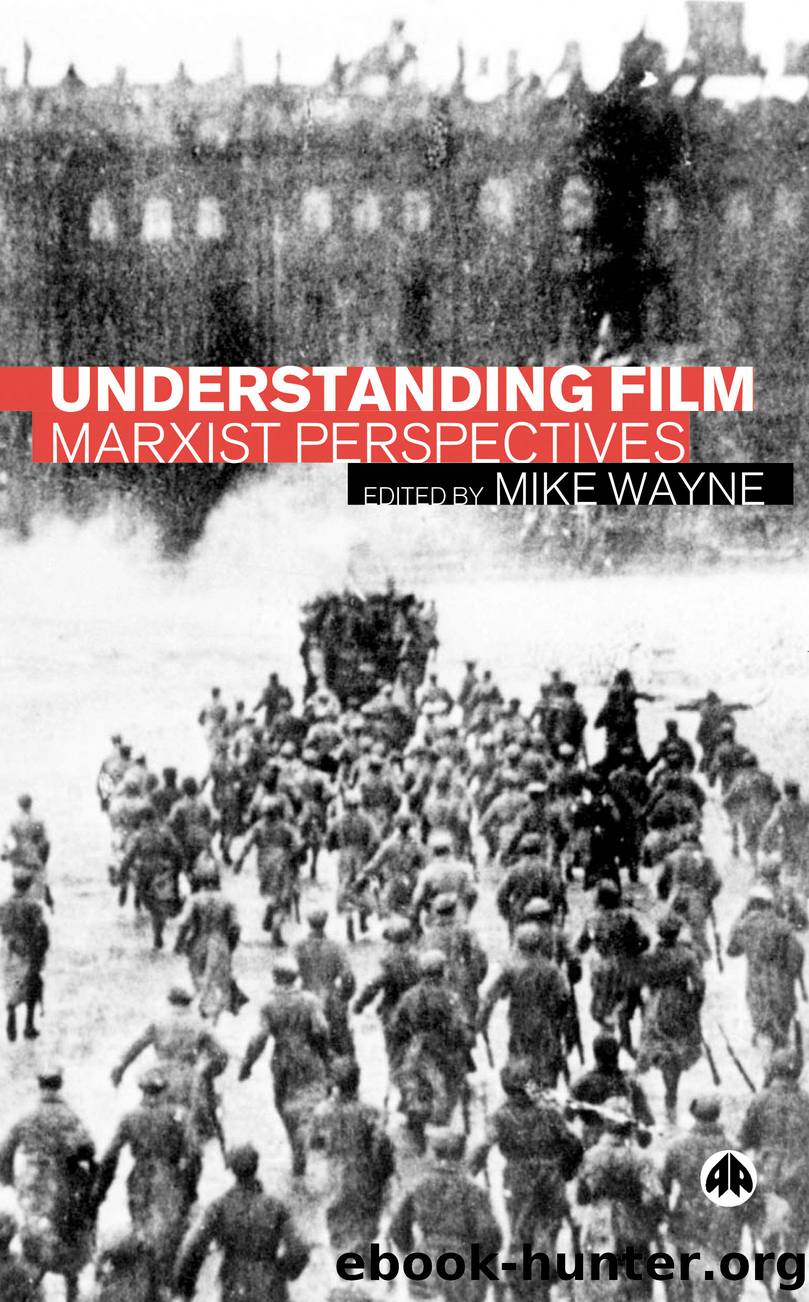Understanding Film by Wayne Mike

Author:Wayne, Mike.
Language: eng
Format: epub
Publisher: Book Network Int'l Limited trading as NBN International (NBNi)
CONCLUSION
By making postmodernism the cultural logic of late capitalism, Jameson ascribes to it a dominance it is hard to actually see, certainly as regards popular film culture, still largely dominated by (albeit modified) âclassicalâ narrative notions of time, space, logic and causal agency as well as other classical paradigms such as method acting, or still able to produce films with significant modernist roots such as Series 7. The âpostmodernismâ of many of the films discussed above exists largely at the level of theme or content, rather than at the level of form, where we would expect to find the more profound indications of perceptual and cultural revolution. Postmodernism is today one of the many cultural resources at play, but it is not, I think, a cultural dominant, as Jameson argues. The sense in which one might argue that postmodernism is culturally significant (not the same thing as dominant) is that it gives a peculiarly articulate expression to certain trends within advanced capitalism, namely the significance of media culture and the global/spatial reach of capital. Jameson argues that modernism was the cultural dominant for monopoly capitalism in the early decades of the twentieth century. We have seen that Jameson reads modernism as an oblique (repressed) gesture towards the international scale of capital in its industrialised imperial stage, a stage in which the national border is increasingly crossed by capital (as commodities, or investment). Yet for the millions of people who flocked to Hollywood movies, who read daily newspapers and cheap paperback novels, modernism was not remotely their cultural dominant. It is Jamesonâs, however, because modernism, he argues, articulates something of the leadingedge tendencies within the system: namely its abstraction, which in geographical terms refers to the enlarged space in which capital seeks to circulate. And it is for this reason that the Great North Road and the train (in Forsterâs Howardâs End) and the plane (in Dog Day Afternoon, Heat and Donnie Darko), are such potent emblems of capital as a global mobile abstract force. Popular culture tries to give some concrete representation to this global mobility and abstract power through the lens of paranoia. Here then is the link between planes, trains and automobiles and the media: as emblems of capital they mark a shift from vehicles of transport and communication through physical movement to mediums of communication through representations and information. And the latter are a sign of a more advanced, mature system with even greater reach and speed.
There is some overlap between paranoia and Jamesonâs decoding strategy, which decomposes the seamless unity of the text, breaking it down into fragments, some of which can then be connected to some larger set of invisible but impinging socioeconomic forces. Jameson is clear, however, that the Marxist conception of the social totality (which stresses contradiction) is not the same as the paranoid visions of popular culture or the functionalist visions of a âtotal systemâ which have dominated the work of some social and cultural pessimists such as Max Weber, Michel Foucault or Jean Baudrillard.
Download
This site does not store any files on its server. We only index and link to content provided by other sites. Please contact the content providers to delete copyright contents if any and email us, we'll remove relevant links or contents immediately.
Call Me by Your Name by André Aciman(20372)
Ready Player One by Cline Ernest(14524)
How to Be a Bawse: A Guide to Conquering Life by Lilly Singh(7391)
Wiseguy by Nicholas Pileggi(5671)
The Kite Runner by Khaled Hosseini(5083)
On Writing A Memoir of the Craft by Stephen King(4863)
Audition by Ryu Murakami(4850)
The Crown by Robert Lacey(4723)
Call me by your name by Andre Aciman(4619)
Gerald's Game by Stephen King(4581)
Harry Potter and the Cursed Child: The Journey by Harry Potter Theatrical Productions(4440)
Dialogue by Robert McKee(4321)
The Perils of Being Moderately Famous by Soha Ali Khan(4169)
Dynamic Alignment Through Imagery by Eric Franklin(4116)
Apollo 8 by Jeffrey Kluger(3637)
Seriously... I'm Kidding by Ellen DeGeneres(3577)
The Inner Game of Tennis by W. Timothy Gallwey(3575)
How to be Champion: My Autobiography by Sarah Millican(3555)
Darker by E L James(3477)
